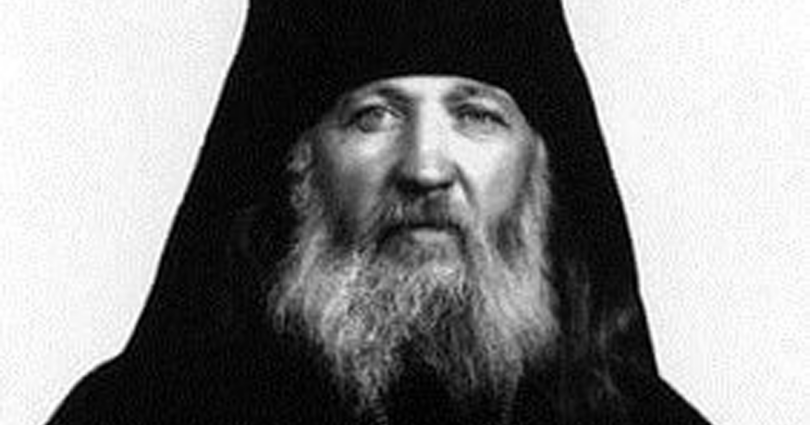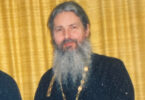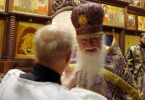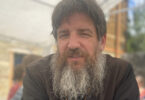Archbishop Ioasaph (Skorodumov) of Argentina was born on this day in 1888.
The following is a highly abridged version of the biography of Vladyka Ioasaph written by Michael Woerl (d. 2019) for the ROCOR Studies site. You can find Michael’s original piece here.
Archbishop Ioasaph was born on 14/27 January 1888 in the village of Rebovichi, Tikhvin District, Novgorod Province of the Russian Empire, along with his twin sister, Maria. Ivan’s father, Vasily Skorodumov, was priest of the village parish, and his mother was Feodosia Skorodumov, nee Kachalova. Feodosia Skorodumov died when the twins were just five years old.
When Ivan was ten years of age, his father took him to Tikhvin, where he attended a school that prepared students for seminary. Ivan Skorodumov graduated from the Tikhvin Spiritual School in 1902, with high marks, having earned a place at Novgorod Theological Seminary. From 1902 to 1908, Ivan Skorodumov attended the Novgorod Theological Seminary, founded in 1740 on the basis of an ukaz of the Empress Anna Ioannovna, which was at the time brimming with the revolutionary atmosphere of student “strikes.”
After successfully completing the competitive entrance examinations, he was accepted into the Saint Petersburg Theological Academy. According to the recollections of the future Archbishop Feodosy (Samoilovich, 1884–1968), Ivan was “strongly influenced” there by Bishop Feofan (Bystrov). He followed Bishop Feofan (Bystrov) to Astrakhan from European Russia, having received a steamboat ticket as a gift. On November 13/26, 1912, the feast day of St. John Chrysostom, Ivan Skorodumov was tonsured a monk by Bishop Feofan. The same ordained him as hierodeacon on November 18/December 1, 1912, and three days later, as hieromonk. The Education Committee of the Holy Synod soon thereafter appointed Hieromonk Ioasaph as Assistant Inspector of the seminary preparatory school in Yaransk, Viatka province (Northern Russia). On December 17/30, 1913, he was appointed to the same position in Poltava (Ukraine), where Bishop Feofan had been appointed the past March. The Revolution caught both Vladyka Feofan and Hieromonk Ioasaph in Poltava. Living in the seminary preparatory school hospital, Hieromonk Ioasaph and Viktor Konovalov (later Archimandrite Amvrossy), who was there with him at the time, noticed the Bolsheviks surrounding the building. The Bolsheviks occupied the building; the two would pass them in the halls, were never spoken to, or, so it seemed, even seen by them. The monks eventually moved to different premises.
Hieromonk Ioasaph was elevated to Archimandrite in May 1920 in the Crimea, where he had travelled with the change of front lines between the White Army and the Red Army. Archimandrite Ioasaph lived in the Grigoriev Bizyukov Monastery in Kherson until the evacuation. Hieromonk Veniamin (Fedchenko) was then Bishop of the White Army and Navy with Denikin’s Army. He assigned Archimandrite Ioasaph as a preacher to the troops. At the time of the evacuation, Archimandrite Ioasaph boarded a boat with eight Bishops and miraculously assisted with loading one of their luggage at the last minute.
From December 1920 to February 1921, Archimandrite Ioasaph was assigned by Bishop Veniamin (Fedchenko) to the Russian Military Hospitals in Constantinople. The short stay in Constantinople ended in departure for The Kingdom of the Serbs, Croats, and Slovenes, where he settled in the 14th-century Serbian Monastery of Vratna, and then taught and served as priest of the Russian Grammar School in Erceg Novi and to the Don Cossack Cadet Corps.
In 1929, Archimandrite Ioasaph was invited to serve in Canada by Viktor Konovalov, a long-time friend of his, with the consent of Archbishop Apollinary (Andrei Vasilievich Koshevoi, 1874–1933), who ruled the North American Diocese of the Russian Orthodox Church Outside of Russia at the time. After arriving in Montreal, due to difficulties with his documents, he had to leave Canada and return to New York. After two months in New York, in February 1930, he was able to return to Canada with a two-year visa. Archimandrite Ioasaph was appointed as Bishop of Montreal, Vicar to the North American Diocese, on April 29/June 11, 1930. In September 1930, he was summoned back to Yugoslavia by the Synod for his consecration to the Episcopate, which took place on September 28/October 11, 1930.
Shortly after his consecration, Bishop Ioasaph travelled back to Montreal. Viktor Konovalov, who had sold his house to pay Bishop Ioasaph’s fare from Yugoslavia to Montreal, recalled that Bishop Ioasaph came onto a “thorny path” with his arrival in Canada. There were numerous rival jurisdictions: the North American Metropolia, and several Ukrainian jurisdictions. The new vicariate had no assets, and no organized parish life. Having come to Canada nearly penniless, Bishop Ioasaph had no salary, but lived on donations. He was subjected to hardship and adversity. Everyone, it seemed, was worried – except Bishop Ioasaph, who trusted in God. After ten years, there were 40 parishes, a Cathedral in Edmonton, a monastery and the Holy Protection Skete, where Vladyka Ioasaph’s friend, Viktor Konovalov became the abbot (Archimandrite Amvrossy). By the time of Vladyka Ioasaph’s later years in Canada, he had about 60 parishes under him.
He was elevated to Archbishop on October,16/29 ,1945. At the 1950 Council of Bishops, he was appointed ruling bishop of the Diocese of Argentina. Vladyka Ioasaph had undergone serious cancer treatment before leaving Canada and could have refused on health grounds, but he nevertheless accepted this with the obedience and humility of a monk. He officially arrived in Argentina in 1951. Little by little, the life of the diocese was regularized: parish churches that had belonged to private persons and “brotherhoods” were property of the diocese as of June 1952, and in August 1953, the diocese was registered with the proper ministry, thus legalized in Argentina. He was well loved by his flock and showed a special care for young people.
The hot, wet climate of Argentina was not healthy for Vladyka Ioasaph. In mid-March 1955, Vladyka suffered a setback with his health, and within one week was in critical condition. He reposed on November 13/26,1955, which was 43 years to the day after his monastic tonsure, on the feast of his beloved Saint John Chrysostom.











